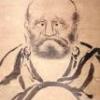All Activity
- Past hour
-
Thanks, Steve. John C.
- Today
-
Hi David, yes this is an authentic Shigetsugu Mei and I believe this is owned by a forum member @Grey Doffin
-
I don't think such swords can be uniquely attributed. 1365? itame dominated with no clear masame(?). Can it be called Tametsugu? I have no doubt some did it recently. Can it be called Hasebe? Here is not a typical Hasebe, but still attributed as such. Yes, it can be Hasebe. Could it have been traditionally called Masamune? Quite likely. Shizu? Can be. Atypical jigane, but. There is no definitive kantei trait on the photo which points to one specific attribution. Maybe in real life there is. It is not uncommon for Soshu not to have one though. Sa school... I personally like the idea, but again nothing says it has to be one.
-
I disagree - looks like a very rare beautiful piece. No real idea what the theme is, but it reminds me of the privacy screens set up around Samurai commanders "Jinmaku" The small symbols could represent mon also seen on these screens - Just a wild theory.
- 1 reply
-
- 2
-

-

-

Shin Gunto Japanese Sword - real?
Scogg replied to Susana Ferreira's topic in Military Swords of Japan
I hate to be the bearer of bad news, but this is a fake gunto. See similar example in the link below https://www.jssus.org/nkp/fake_japanese_swords.html Sincerely, -Sam -
Susana Ferreira joined the community
-
Hi! I bought this Shin Gunto Officer Japanese Sword in an auction a few years ago. And I was looking into selling it now. I was doing some research and I see a serial number 40127 which lets me know it's mass produced. But the fitting is quite unusual and I don't see others with such ornate fittings. Can someone tell me if this might be original? It has oxidated quite a lot (made of some sort of metal). Any help would be appreciated.
-
I asked the All-Japan Swordsmith Association whether swords (didn't specify length) were required to be dated, and they told me it was managed on a prefecture-by-prefecture basis, and that there was no nationwide requirement to date swords.
-
Hello David, This is absolutely a legitimate Shigetsugu signature! Do you own this sword, or are just doing some research? Search the posts, there was quite a discussion on a sword by him recently and compare. Tom M.
-
I definitely think this could possibly be the smith given the fact that I have seen a few other type 3 gunto from the same maker all around the same time frame 1944-45. But if someone is able to identify the different signature styles to determine which Nobumitsu it is I would really appreciate it.
-
Toryu2020 started following HEAVY shakudo sword guard with silver(?) fukurin
-
PM Sent
- Yesterday
-
I'm sure this may have been answered in a different post, however I can't seem to find it. Are post war tanto required to be dated? John C.
-
-
The maedate will need a suitably-sized slot for insertion of the tsunomoto. People often go for big fancy flashy maedate, but there is a school of thought that this can detract from the kabuto, so small and economical could be the way to go. BTW, it’s not just linseed oil, but the much harder to source boiled linseed oil.
-
Sorry don’t have the length of the nakago I’ll have to wait till it comes in to measure it but from what I have seen it seems that many Rinji Seishiki (type 3) gunto have longer nakago and usually have 2 Mekugi Ana.
-

Artur Drogamiecza: Tsuba #14-17 (Tosho, Ko Tosho, Shoami)
Artur DrogaMiecza replied to Artur DrogaMiecza's topic in Tsuba
Tsuba #15 sold. -
Would like to know the length of the nakago or tang it looks very long. Thanks..... John
-
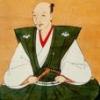
HEAVY shakudo sword guard with silver(?) fukurin
Steve Waszak replied to Steve Waszak's topic in Tsuba
-
The dominant feature of this tsuba is its weight. I do not have a scale handy, but it is among the heaviest tsuba I have ever held. I believe this is owing to its base material, which judging by this weight and the color, is a reasonably high-grade shakudo. A fukurin of silver(?), done in a roped design, and featuring fine, hairline embellishment, offers a wonderful contrast to the shakudo plate. The motif is kebori waves with scattered indaid family crests. I cannot determine with certainty the metal used to form the crests, but it would seem to be copper. The very deep tagane around the nakago-ana is reminiscent of the tagane seen on the sword guards of Hirata Hikozo. Is this guard Higo, then? It isn't really my area of focus and research. Those with more experience in the area of Higo tsuba may have a better read on this piece than I do. Once again, I must emphasize the rather stunning weight of this piece. At 7.8cm x 6mm, the sheer amount of metal here is impressive. This guard is far from my own personal area of focus (Owari Province tsubako), but I find it very appealing. $675.00, plus shipping.
-
I would classify it as a late war sword, having been made in the last year of the war. It is decent quality and looks to be in good shape. The mounts are called Rinji Seishiki, but they've been known by many different names over the years (such as Type 3 or 44). Someone may be able to chime in with more information on this particular smith. The blade is stamped which indicates this sword was not produced in a traditional manner, or it involved some sort of non-traditional component. This is typical for many gunto, early and late war. Edit: After searching, this may be the guy we are looking for but I am not 100% sure on this.
-
Next up is a large (8.1cm x 5mm) iron tsuba with some very fine brass inlay. Vines and flowers with triple tomoe motif. Heianjo-zogan school. Momoyama Period. The brass inlay on this sword guard has a beautiful deep color, which contrasts attractively with the dark iron. All of the inlay is intact, with the possible exception of one strand of vine at about 1:00 on the ura of the tsuba. The iron ground appears to be of higher quality than I often see with this school (with Heianjo-zogan tsuba, the iron is relatively coarse and seems highly subject to rust damage), and is in overall good condition. There are some tekkotsu on the rim, providing an appealing texture. Heianjo-zogan tsuba were made from the Muromachi into the Edo Periods, but perhaps reached their peak form in the Momoyama years of the late-16th century. I believe this guard dates to that time. $375.00, plus shipping.
-
Hi Lewis, Sometimes the mune got shaved on swords of all sizes so that kissaki could be saved. If you have “Facts and Fundamentals” there’s the suggestion in there that the straighter mono uchi in kamakura era blades results from that. It’s hard to tell in this case as the hadori is heavy but maybe that’s what happened? Satsuma age is an extreme way to achieve the same result.
- 1 reply
-
- 1
-


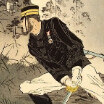










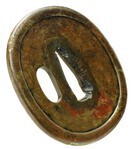

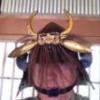

.thumb.jpg.4fc7784d95a0911833d40b89dc53de84.jpg)
.thumb.jpg.0e46d94b6ee39e1c7bd9e103c346ef1e.jpg)
.thumb.jpg.557ae1439f8c839d5efaf2e39988a3a3.jpg)
.thumb.jpg.93185774ac0a7221bfe38b50d742307f.jpg)
.thumb.jpg.4798285c255c11ef54375ddb75ae8e6f.jpg)

.thumb.jpg.a378473595b61f02d4075165389a17bf.jpg)
.thumb.jpg.ef1f46a60186c989029181eb9450afbb.jpg)
.thumb.jpg.e4cfd395fd912c68cfa17c5147021c4b.jpg)
.thumb.jpg.39db5f89f70aab5341e62d02727fe12d.jpg)
